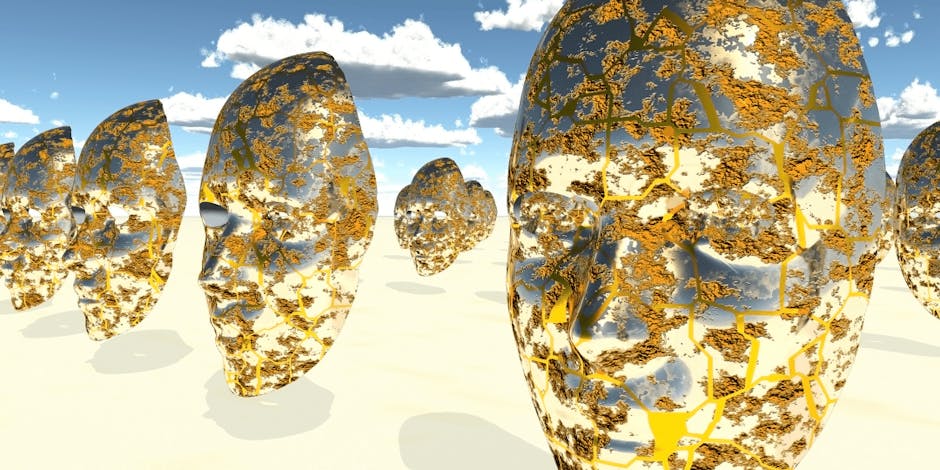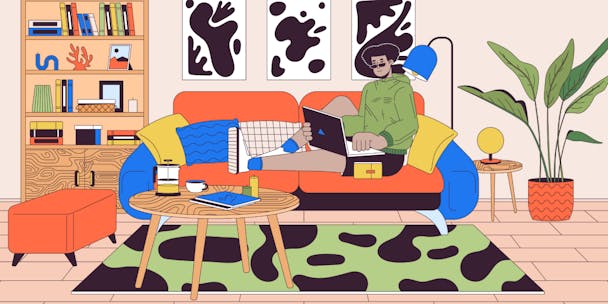How to generate images for business with AI: A guide to perfect prompts
Master the skill of writing prompts to generate striking images and elevate your marketing projects.

Artificial intelligence (AI) can enhance marketing at various levels. It can make your decisions more data-driven, contribute to your creative team’s productivity by outsourcing mundane tasks, or help you provide your customers with more personalized services. However, learning and understanding how exactly AI-powered tools work is essential for marketing professionals.
In this article, the Depositphotos team, which recently launched AI Image Generator, shares essential tips on crafting ideal prompts for text-to-picture generators. This way, you can save time while working on your next sales campaign or presentation.

How does AI generate images? Legal aspects and prompt importance
A typical AI-powered tool leverages the “knowledge” gained from previously processed image libraries. The more vivid these databases and the more additional information they include — like detailed descriptions of objects in pictures or other tags that may simplify visual object recognition— the better the final result a tool delivers. The origin of processed databases and the legal safety of generated images are other critical issues regarding AI-powered tool usage.
In the case of AI Image Generator by Depositphotos, all pictures are unique and will not be added to any library, which enables their usage for commercial projects and protects the visual authenticity of your campaigns. Other aspects that make the tool safe for business use are:
Standard licensing
All generated works are available for download and use under the Standard license, and are suitable for digital and print projects, including advertising, SMM, UI design, packaging, and media.
No risk of copyright infringement
Pictures by the Depositphotos generator do not include copyrighted logos or other items that might pose legal risks.
High quality of content
After entering your prompt, you receive four versions of an image with a resolution of 2048×2048 pixels. If you need higher-resolution files, you can use Image Upscaler, another tool from the Depositphotos creative ecosystem that enhances image size without losing quality.
Having a well-trained AI-powered image generation tool that covers all legal aspects doesn’t mean any picture it generates will perfectly match your campaign. Another challenge modern creatives face is crafting text prompts that will give AI detailed information on their content needs. Although all that is required to get a unique picture is to type in a text description, it’s better to approach this thoughtfully and learn what makes a good prompt.
6 tips on crafting text prompts for image generators
1. Outline the details of your object
Example of a prompt that includes specific details: “A 20-year-old man playing basketball in the backyard of a red brick five-store residential building, wearing white sneakers, black jeans, and a green t-shirt.”
If your prompt is open to interpretation, AI will act at its discretion, and its vision may not match your expectations. On the contrary, the more specific and unambiguous characteristics you apply, the higher the probability that you will get what you imagined. Need an image of a cat? indicate its breed and color. Need a portrait of a person? Mention age, height, clothing, and emotional state.
2. Add context about what’s going on in your images
Example of a prompt that provides valuable context: “A senior couple in love kissing in front of a summer sunset on their anniversary after having a picnic with sparkling wine on a green hill full of flowers.”
Visual storytelling is a powerful tool that allows you to capture your audience’s attention and build an emotional connection with them. AI can easily cope with the task of telling a story through a single image, but for this, you need to say it is a complete story and indicate the scene’s context. It can be color, specific objects, or image style.

3. Mention the type of composition
Example of a prompt with clearly described composition: “A vertical-oriented closeup of a smiling female entrepreneur, symmetrical composition with shelves full of organic farm products in the background.”
If you know where to use a generated image and already have a design template, you might also have preferences for object placement in a frame and the background type. Don’t forget to mention all requirements in your prompt—essential and minor details, as well as their location relative to each other.
Explore another article on The Drum to create appealing layouts: 7 graphic design trends: Which one will boost your communication in 2024?
4. Specify image style or general aesthetics
Example of a prompt with a clearly defined image style: “A bright-colored anime-style image of a cat and a dog during their battle for a comfortable place to rest on their owner’s couch.”
Impressionism or hyperrealism, 3D graphics or classic animation, bright colors or noir style—the same scene can be depicted in different styles, which affects its perception by audiences. Hence, it’s critical to mention possible image styles. To quickly navigate styles and aesthetics, check out our guide to the most popular of them.
5. Avoid vague characteristics - use descriptive words
Example of descriptive language in a prompt: “A narrow Italian old town street leading to the seaside, with buildings colored in yellow and pink and big clay pots with flowers on both sides of it; sheets are dried on a rope stretched between the balconies of the third floor.”
Your image's vibe is significant for maintaining brand consistency and building connections with your audience. Consider that your overall branding isn’t something an AI image generator will follow by default. That’s why, when you simply write “mountains,” you might see threatening snow-capped peaks or a peaceful green highland meadow with a flock of sheep. To avoid mistakes, along with using adjectives to denote image moods, add details that might convey it.
6. Try it several times and experiment more
AI learns by interacting with you, just as you better understand how the tool works with each request. Short prompts perform worse than long and detailed ones. Descriptive language is better than abstract concepts and relative characteristics. However, you can also develop your system of working with the tool, having learned the strengths of each of you in practice. Practice more, and you’ll get prominent results.

Ready to generate an image? Enter your prompt right away
Crafting perfect prompts for AI-powered image generators might seem tricky since you must translate your thoughts and imagination into texts containing specific details and context. However, as soon as you master this skill, the tool will become your reliable co-creator, always ready to deliver the best possible results.
At Depositphotos, we encourage you to start playing with AI today and enjoy the positive impacts of it on your workflow and budget.
